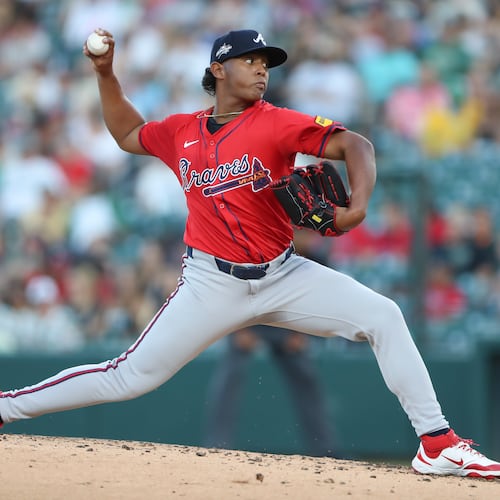Let's field a couple of questions folks had for me on the Twitter machine, which has been loaded with queries related to the Hall of Fame class to be announced Wednesday and several more today (Monday) after Baseball America’s Top 100 prospects list was announced.
> Given that former 10-time Braves Gold Glove winner Andruw Jones, in his first year on the ballot, was polling at just above the minimum five percent required to remain on the ballot for next year, I was asked, "What's the lowest first-ballot percentage anyone ever received who was eventually elected to the Hall of Fame?" (A few people asked variations of this, which is the reason I paraphrased and lumped them into one; well, that plus they were further down my Twitter timeline than I cared to scroll today.)
Answer: The lowest first-year percentages for players eventually voted into the Hall of Fame on the Baseball Writers' Association of America (BBWAA) ballot during the annual-voting era was Duke Snider's 17 percent 1970 and Bert Blyleven's 17.5 in 1998. I'd like to credit HOF ballot-tracking expert Ryan Thibodaux -- @NotMrTibbs on Twitter -- and his hard-working interns for helping with that info request last week.
Snider was elected with 86.5 percent in his 11th year on the ballot in 1980, more than double the percentage he had received four years earlier.
Blyleven, after dipping to 14.1 percent in his second year on the ballot, began to slowly increase his percentage until he was elected with 79.7 percent in his 14th year on the ballot in 2011. The maximum number of years a player can be on the ballot was since reduced from 15 to 10.
Andruw Jones, as of Monday, was projected to be named on about six percent of the ballots.
Before the switch to annual BBWAA voting in 1967 – writers had voted every other year for three decades -- and long before the five-percent rule was introduced, Ralph Kiner’s 1.1 percent in his first year on the ballot in 1960 was the lowest for any player eventually elected on the writers’ ballot. He was elected in 1975 when named on 75.4 percent of ballots, barely surpassing the 75-percent requirement for HOF election.
Others received lower first-ballot percentages than Snider and were eventually elected by what was the veterans committee and is now divided into three different 16-person era committees, i.e. the Today's Game Committee that elected former Braves GM John Schuerholz last year. Longtime Tigers shortstop Allan Trammel, who was named on only 15.7 percent of writers' ballots in his first year of eligibility and peaked at 40.9 percent in his 15th and final year on the ballot in 2016, was elected to the Hall of Fame in December by the Modern Era Committee along with another former Tiger, pitcher Jack Morris.
> The next question was in regards to the Braves placing eight prospects in the Baseball America Top 100 prospects list announced Monday, led by No. 1 overall Ronald Acuna, the Braves' first No. 1 since Jason Heyward. Atlanta had two more prospects than any other organization placed in the top 100.
The specific question from Shelton (@dannatural05) was, "How many would have been on this list if we didn't lose all of those international players?
He was referring to the dozen international prospects the Braves had stripped in November when Major League Baseball slapped the team and especially former GM John Coppolella with severe penalties for infractions committed in the pursuit of international free agents, mostly 16- and 17-year-old Latin American prospects. The players were declared free agents and Coppolella was banned for life by MLB in November.
Getting back to Shelton’s question: The answer is eight, the same number they had on the list anyway. I say this because none of the dozen prospects who were declared free agents and signed with other teams made the list. That included Kevin Maitan, the prized prospect of the bunch, who’s now with the Angels. He was No. 77 on the BA Top 100 a year ago but didn’t impress much in his first full season of minor league ball and didn’t make the list this yuear.
The fact that none of those dozen prospects – or a 13th, Korean shortstop Jihwan Bae, whose contract had yet been finalized and was "disapproved" by MLB – made BA's Top 100 doesn't mean some of them won't be top prospects, but is more a reflection of their age – most are still 17 or younger including Maitan, who got a $4.25 million signing bonus from the Braves in 2016 and double-dipped by landing a $2.2 million bonus when he signed with the Angels after MLB declared him and the others free agents. Maitan is still just 17.
The vast majority of players in the Top 100 are 19 or older.
About the Author
Keep Reading
The Latest
Featured

